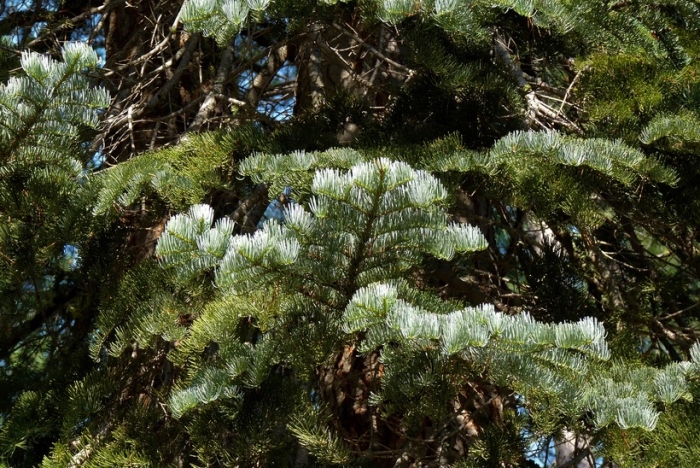California Red Fir
(Abies magnifica)
California Red Fir (Abies magnifica)
/
/

Jean Pawek
CC BY 3.0
Image By:
Jean Pawek
Recorded By:
Copyright:
CC BY 3.0
Copyright Notice:
Photo by: Jean Pawek | License Type: CC BY 3.0 | License URL: http://creativecommons.org/licenses/by/3.0/ | Attribution: 2017 Jean Pawek | Publisher: Calphotos | Notes: |
























































Estimated Native Range
Summary
Abies magnifica, commonly known as California Red Fir, is an evergreen tree native to the high mountain ranges of the Klamath Mountains and the southern Cascades in southwest Oregon, as well as the Sierra Nevada in California. It thrives at elevations of 1,400–2,700 meters (4,600–8,900 ft), often forming pure stands or mixed coniferous forests. The species is adapted to a subalpine climate with heavy snowfall and cool summers.
California Red Fir is notable for its majestic stature, reaching heights of 40–60 meters (130–200 ft) with a trunk diameter up to 3 meters (9 ft 10 in). The crown is narrow and conical, with bark that transitions from smooth, grey with resin blisters on young trees to a distinctive orange-red, rough, and fissured texture on mature specimens. The needle-like leaves are glaucous blue-green, with a unique arrangement that curves upward, giving the foliage a full, lush appearance. The tree is valued for its ornamental qualities, particularly the striking bark and attractive foliage. It is also appreciated for its wood, which is used in construction and paper manufacturing, and as a traditional Christmas tree. In cultivation, it requires full sun exposure, medium water, and well-drained soils. While it is not commonly used in urban settings due to its large size, it is suitable for large gardens, parks, and naturalized areas. Care should be taken with site selection, as the tree’s size and root system can be problematic in confined spaces. Additionally, it is susceptible to fir engraver beetles and root rot in poorly drained soils.CC BY-SA 4.0
California Red Fir is notable for its majestic stature, reaching heights of 40–60 meters (130–200 ft) with a trunk diameter up to 3 meters (9 ft 10 in). The crown is narrow and conical, with bark that transitions from smooth, grey with resin blisters on young trees to a distinctive orange-red, rough, and fissured texture on mature specimens. The needle-like leaves are glaucous blue-green, with a unique arrangement that curves upward, giving the foliage a full, lush appearance. The tree is valued for its ornamental qualities, particularly the striking bark and attractive foliage. It is also appreciated for its wood, which is used in construction and paper manufacturing, and as a traditional Christmas tree. In cultivation, it requires full sun exposure, medium water, and well-drained soils. While it is not commonly used in urban settings due to its large size, it is suitable for large gardens, parks, and naturalized areas. Care should be taken with site selection, as the tree’s size and root system can be problematic in confined spaces. Additionally, it is susceptible to fir engraver beetles and root rot in poorly drained soils.CC BY-SA 4.0
Plant Description
- Plant Type: Tree
- Height: 100-150 feet
- Width: 10-30 feet
- Growth Rate: Slow
- Flower Color: N/A
- Flowering Season: Non-Flowering
- Leaf Retention: Evergreen
Growth Requirements
- Sun: Full Sun
- Water: Medium
- Drainage: Medium, Fast
Common Uses
Bird Garden, Deer Resistant, Fragrant, Low Maintenance, Rabbit Resistant, Rock Garden
Natural Habitat
Native to the high mountain ranges of the Klamath Mountains, the southern Cascades, and the Sierra Nevada
Other Names
Common Names: Silvertip Fir, Red Fir, Abete Magnifico, Praktgran
Scientific Names: , Abies magnifica, Abies amabilis var. magnifica, Abies magnifica f. glauca, Picea magnifica, Picea nobilis var. magnifica,
GBIF Accepted Name: Abies magnifica A.Murray bis